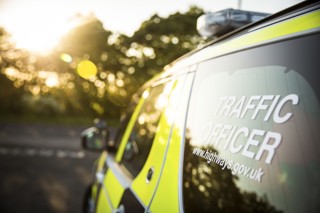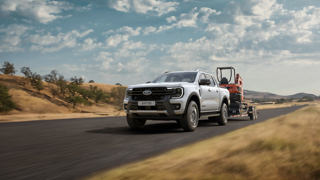Bedfordshire, Cambridgeshire and Hertfordshire (BCH) Roads Policing Unit is urging fleets to check processes around towing policies after a driver was recently stopped for driving without the correct licence and failing to secure a load.
A Transit Tipper was stopped on the A414 (old M10) in St Albans at around 7pm on March 6.
PC Ben Pitelen of Herts Police’s roads policing unit, told Commercial Fleet: “We are seeing this offence fairly frequently, with younger drivers and companies being unaware of the legal wording.”
In the case of the Transit Tipper, he said that the only part of the load secured was the digger, with the remaining items were laid in the bed relatively unsecured.
The driver was reported for both offences and the trailer had to be collected. BCH tweeted out the offence on Twitter after the driver had been stopped.
The licence offence carries a minimum fine of £100 and three penalty points. The insecure load offence does not attract penalty points, but drivers can face a minimum fine of £100.
The driver needed a category BE licence to drive a vehicle with a maximum authorised mass (MAM) of 3,500kg with a trailer.
The tow licensing rules explained
If you passed your test on or after 1 January 1997 you will have a Category B licence, which means you can drive vehicles up to 3,500kg maximum authorised mass (MAM) with up to eight passenger seats (with a trailer up to 750kg).
You can also tow heavier trailers if the total MAM of the vehicle and trailer is not more than 3,500kg.
If you have a Category BE licence you can drive a vehicle with a MAM of 3,500kg with a trailer. The size of the trailer depends on the BE ‘valid from’ date shown on your licence.
If the date is:
- before 19 January 2013, you can tow any size trailer
- on or after 19 January 2013, you can tow a trailer with a MAM of up to 3,500kg
The Road Traffic Act 1988 requires "vehicle users" to ensure vehicles are not overloaded.
DVSA guidance advises drivers to find the maximum permitted axle weight and gross to make sure their vehicle has not been overloaded. This can be found on the manufacturer's plate which is usually located in the vehicle cabin, under the bonnet or on the chassis of trailers.
PC Pietlen said: “What a lot of people struggle with in our experience is the weight of the load. The key wording is maximum authorised mass – the permitted maximum that the trailer can carry. If the trailer if unloaded, it is still a 3.5t trailer and requires the licence extension.”
However, Ian Gallagher, head of compliance information at the Freight Transport Association (FTA), said that while they do get calls to check on guidance on licensing for towing, he denied it was a major issue for the industry.
However, he admitted: “The different variations to licencing depending on when a driver’s licence was issued is what makes this a complicated area.
“The onus is on the fleet manager or transport manager to make sure the licence checks are carried out and drivers are aware of what they will be cleared to drive.”
Gallagher said that as a basic rule, if the driver lookers younger, make sure their licence is checked for when it was issued before handing over keys.
He said that transport managers need to have a grounding for the different licences required based on when they were issued.





















Login to comment
Comments
No comments have been made yet.